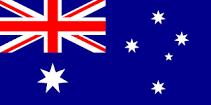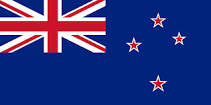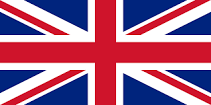History Of Sochin
Despite modern karate regarding Seisan as a Goju Kata and Sochin as a Shotokan kata, what is interesting to note is that tracing back their lineage, one discovers they came from the same Okinawan source, and both kata date back further than most other karate kata. While most Naha-te based kata were introduced or developed by Chogun Miyagi (founder of Goju) or Kanryo Higaonna (founder of Naha-te and Miyagi’s instructor), Sochin was introduced further back by Higaonna’s instructor, Seisho Aragaki. Seisan was also taught by Aragaki but it is unlikely that he introduced it.
It is these two very old kata (Seisan and Sochin) that highlights how the much-debated topic of, ‘which modern style of karate studies the truest version of katas’, is a waste of time. No single style, regardless of its roots can claim that they teach the truest or purest version of any kata because every kata has been altered and modified over the generations by absolutely everyone.
So how is it that two kata of the same source could end up at different ends of the traditional karate spectrum?
Assuming you have already read up on Seisan kata, you are aware that its originator is unknown and that was practiced by a number of Okinawan karate forefathers. The most famous is the Goju based version, which is the version practiced in Go-Kan-Ryu (it is worthy of noting however that even within Goju, after the death of Miyagi, a number of versions have arisen from his top students, and while similar, each has stamped their own individual interpretation of the kata).
When it comes to Sochin kata, while Aragaki taught Higaonna (founder of Naha-te), he moved away from Naha to teach his brand of karate to martial artists in the city of Shuri (the term ‘brand’ is used because Aragaki never formalized a style).
While he taught many kata (also a number of weapons kata), two kata he founded and taught that became widely popular in Shuri city were ‘Unsu’ and ‘Sochin’. Later when Aragaki returned to Naha, Goju had been formed and was the most popular style. For this reason, Sochin was not so popular in Naha.
Despite its Naha (Goju) origin, most styles that practice Sochin today come from a Shuri (Shotokan) lineage. This has most likely resulted in the stances growing deeper (note Goju styles use mostly ‘neko-ashi datchi’ cat stance) and the tempo hastened. That said, its Naha roots are still very apparent in the opening sequences where the same pattern of movements are performed three times (like many Naha or Goju kata eg. Saifa, Seiunchin, Sanseryu, Shisochin, Seisan etc) and the blocking in these sequences is done slowly and with strength.
Furthermore – in the opening sequences – the hips when performing the slower movements should push forward, much the way they push forward when performing opening sequences of Goju kata in Sanchin datchi.
One person who truly appreciated Sochin was Kenwa Mabuni (1889 – 1952), a master who later formulated the popular style of Shito-Ryu. Note that Shito-Ryu (like Go-Kan-Ryu) utilises many kata from both Naha origin and Shuri/tomari origin. Mabuni likely changed Sochin somewhat when formalising Shito-Ryu as most Shito-Ryu kata are quite different to the same kata practised in their native styles.
As with all kata, over time, variations were introduced. The version that is most popular throughout the world today (and the version practiced by Go-Kan-Ryu) is the Shotokan version, which was developed by Yoshitaka Funakoshi, son of master Gichin Funakoshi (founder of Shotokan). Funakoshi’s son trained under Mabuni (where he learned Sochin) and introduced it into Shotokan after he lengthened the stances and introduced the high side-kicks.
Because Sochin has a number of different styles that practice it (hence a number of different version), it also has different translations. Common names are ‘Grand prize’, ‘Grand battle, ‘Strong calm’ and ‘Immovable’ kata (a name representing the fudo-datchi stance used throughout). The most common translation is ‘Strong Calm’ which is also very Naha styled name. This name is indicative in the kata’s form given its use of ‘strong’ fudo- datchi stances combining with slow, calm blocks (tate shuto uke).



